Humans have used fireplaces to warm for nearly 800,000 years. Archeological evidence points to our ancestors using fire for cooking about 1.5 million years ago. This long history shows remarkable changes in these heat sources. Simple dug-out holes in prehistoric caves grew into something more sophisticated during the Medieval Era. Fireplace history is interesting, to say the least.
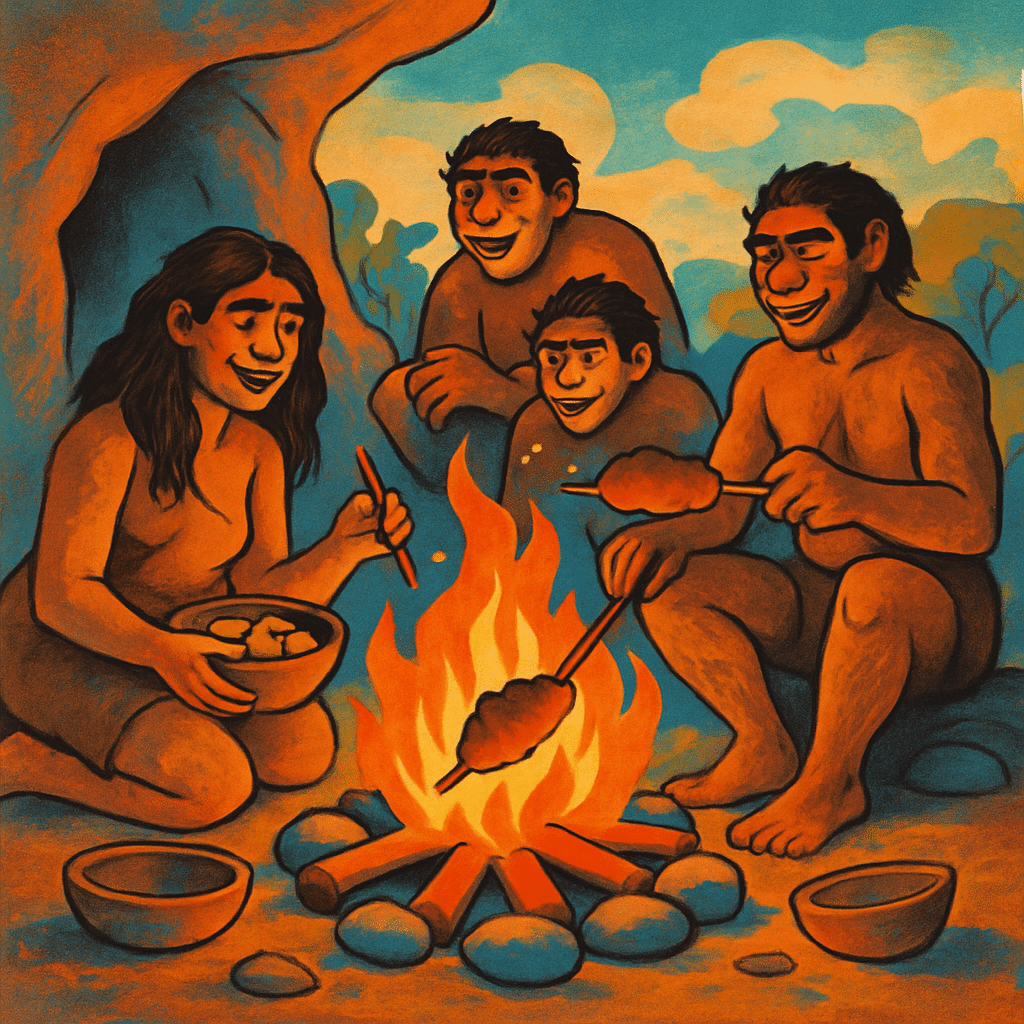
Massive fireplace openings dominated homes in the 1600s (large enough for people to literally walk into). Benjamin Franklin’s revolutionary stove design emerged in the 1700s. Victorian Era brought smaller, more decorative focal points made from cast iron. Modern homes now feature gas fireplaces, electric fireplace inserts, and fireplace TV stands that combine function with contemporary style. The humble fireplace’s development from a survival necessity to an architectural feature stands as one of humanity’s longest design developments. This content explores how fireplaces have shaped our homes and lives through thousands of years.
The Fireplace as a Survival Tool
Archeologists have found that there was evidence of our earliest ancestors creating the first “fireplaces” nearly 800,000 years ago. The evidence points to cooking practices that date back 1.5 million years. Our original ancestors dug simple holes into cave floors or built them in the center of basic shelters.
What is a fireplace in early human history?
Ancient fire pits looked nothing like modern fireplaces. Prehistoric humans managed to keep open flames burning in caves or huts but had little control over smoke and heat. The medieval great hall later developed with a hearth located in the center, where an open fire burned beneath a roof vent. People had no proper chimneys back then. Smoke escaped through holes in roofs or open windows, which made indoor air quality the biggest problem.
The ability to control fire gave humans a huge advantage. Our capabilities grew as we moved from finding natural fires to keeping them burning. Archeological evidence points to occasional fire use starting 1.6 million years ago. However, humans only started using fire consistently about 350,000 years ago.
Cooking, warmth, and protection in ancient times
The primitive fireplace changed human society in remarkable ways, beyond providing warmth. Fire helped our ancestors live in dark spaces like caves that were previously uninhabitable. It also gave them protection from predators in open areas like savannas. Fire made tough foods available (especially roots and tubers that needed heat to soften their fibrous structures.)
The hearth became central to family life veeeery fast. The fireplace held such importance in ancient Greece that it became part of marriage ceremonies. The bride’s mother carried a flame to the newlyweds’ home as a symbol. The hearth’s role in cooking went beyond just preparing food. It created a natural space where communities gathered and shared knowledge.
Fireplace screen and safety in primitive dwellings
People worried about safety even with primitive fires. The first fire screens appeared in the early 19th century to stop dangerous sparks from flying into rooms. These barriers soon became decorative while serving their protective purpose.
Medieval homes featured the cantou (or inglenook) fireplace design that improved safety through clever architecture. This enclosed sitting area under a protruding chimney breast protected people from drafts while letting them stay close to the fire.
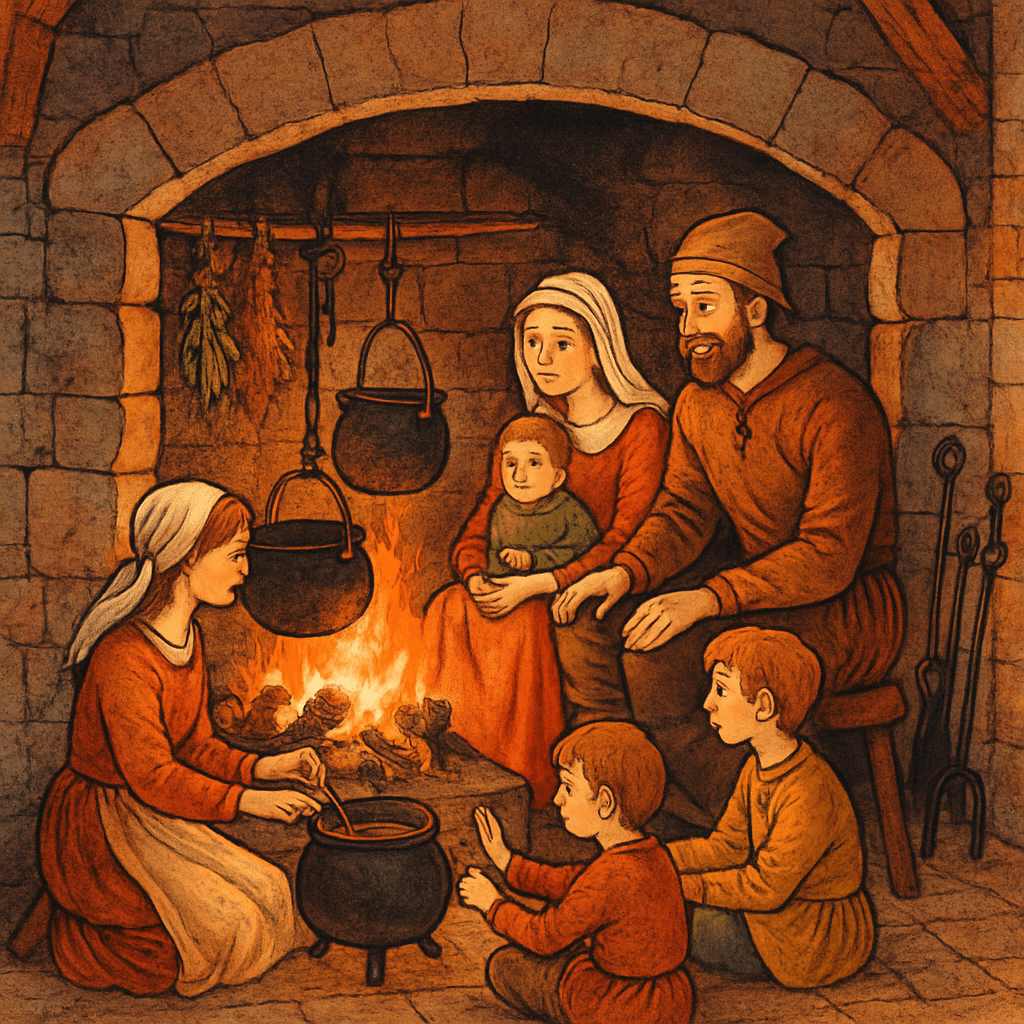
From Necessity to Innovation
The medieval period brought a fundamental change in fireplace design. Two-story buildings became common, and the traditional central fire pit couldn’t heat multiple floors properly. This led to new ways of heating homes.
The move to wall fireplaces and chimney invention
Norman England saw the first chimneys around the 11th century. These allowed people to move fireplaces from room centers to exterior walls. This breakthrough meant builders could now put fireplaces on every floor of multi-story buildings. The original chimneys had horizontal vents, but smoke rises naturally, and this design didn’t work. Builders developed vertical chimneys that used drafts to push smoke out. European homes commonly featured chimneys by the 14th century, which improved indoor air quality.
Prince Rupert of the Rhine made a breakthrough in 1678 with his fireplace grate invention. His design let air reach wood from below, which created better fires through increased airflow. He added a baffle to control air and cut down smoke, which made fireplaces work better.
Franklin stove and early heating efficiency
Benjamin Franklin changed home heating forever in 1742 with his “Pennsylvania Fireplace,” which we now call the Franklin stove. This cast-iron fireplace could stand in room centers and spread heat everywhere. The stove kept rooms warm even after the fire went out.
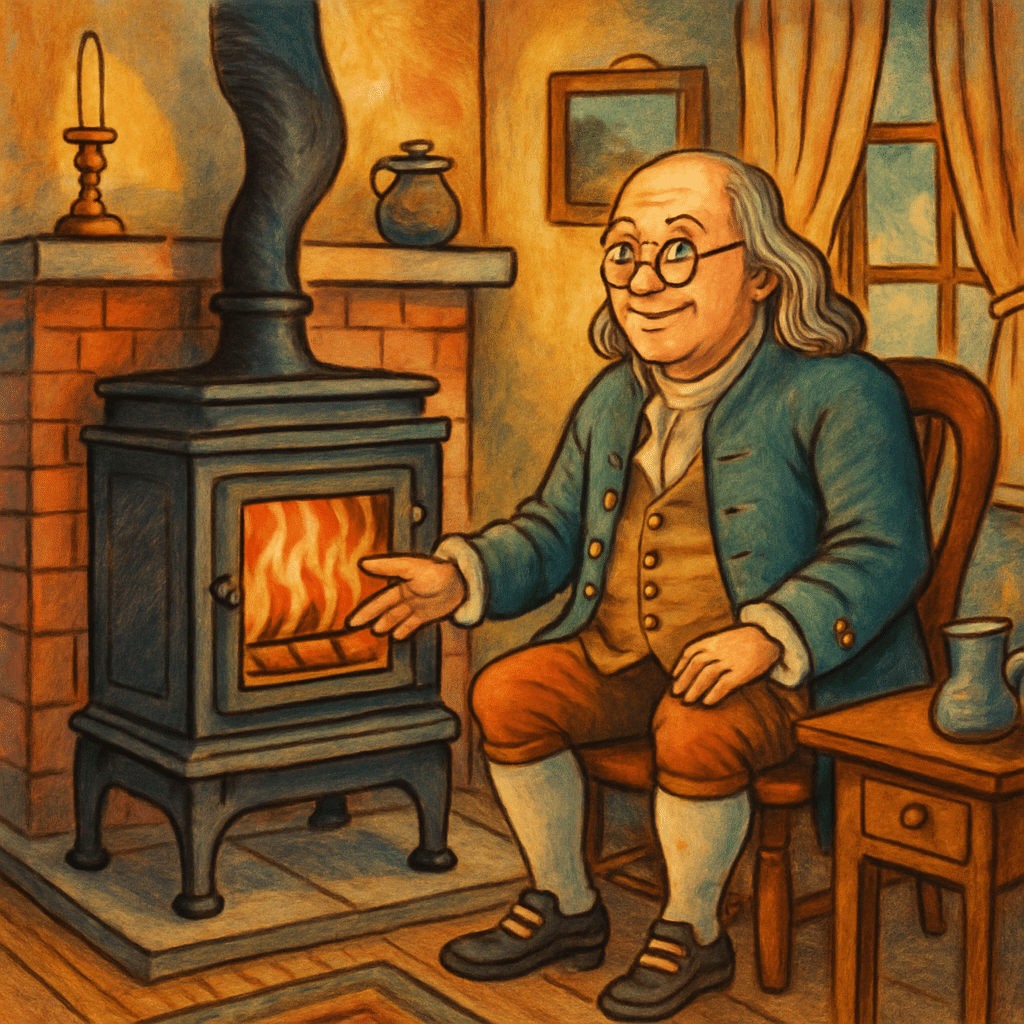
Franklin’s design had a hood-like front opening with an air box behind it that moved heat into the room. The stove needed constant fuel to maintain proper draft, which was its main drawback.
Fireplace insert progress and airflow improvements
David Rittenhouse improved Franklin’s design by adding a 90-degree bent pipe to the stove’s back that sent smoke through a chimney. He angled the sides to push more heat into rooms.
Count Rumford created another groundbreaking fireplace design in 1796 that shaped structures well into the 1900s. His fireplace was taller and narrower, with a smaller, shallower firebox and sharply angled covings that reflected heat better. This design cut heat loss and gave smoke a clearer path out.
Fireplace inserts came along in the late 19th century to improve existing masonry fireplaces. Electric fireplace inserts gained popularity in the 1980s, offering convenient heat & style without traditional fuel.
The Fireplace as a Social and Cultural Symbol
Fireplaces grew beyond their basic purpose to become a cultural symbol that represented wealth, family unity, and social status. Its design and placement showed society’s changing values and artistic preferences through different time periods.
Victorian and Edwardian fireplace mantel designs
Victorian fireplace design (1837-1901) brought a transformation toward ornate decoration. These fireplaces looked different from earlier simple styles and featured diverse, unrestricted designs that combined classical elements with natural details. They stood lower than previous styles because 19th century buildings had modest ceiling heights. Their wide mantel shelves gave plenty of room to display ornaments, which matched the decorative trends of that time.
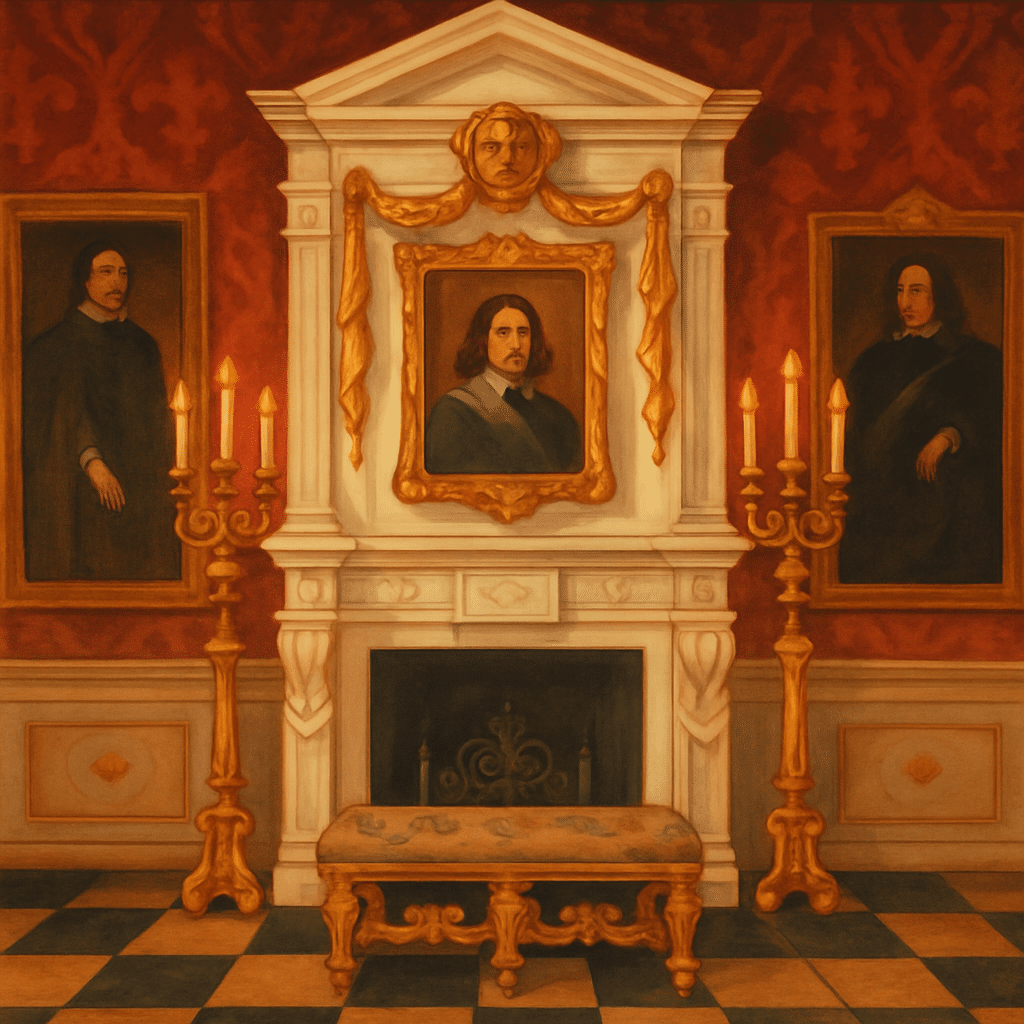
Edwardian fireplaces (1901-1910) took a different path with their lighter look and cleaner lines. Heavy cast iron hobs disappeared as designers chose more refined styles. The pieces featured brighter colors and simpler shapes that moved away from Victorian excess. A neo-Classical revival emerged during this time. Skilled artisans handcrafted many pieces, marking the last great period of handmade fireplaces before mass production began.
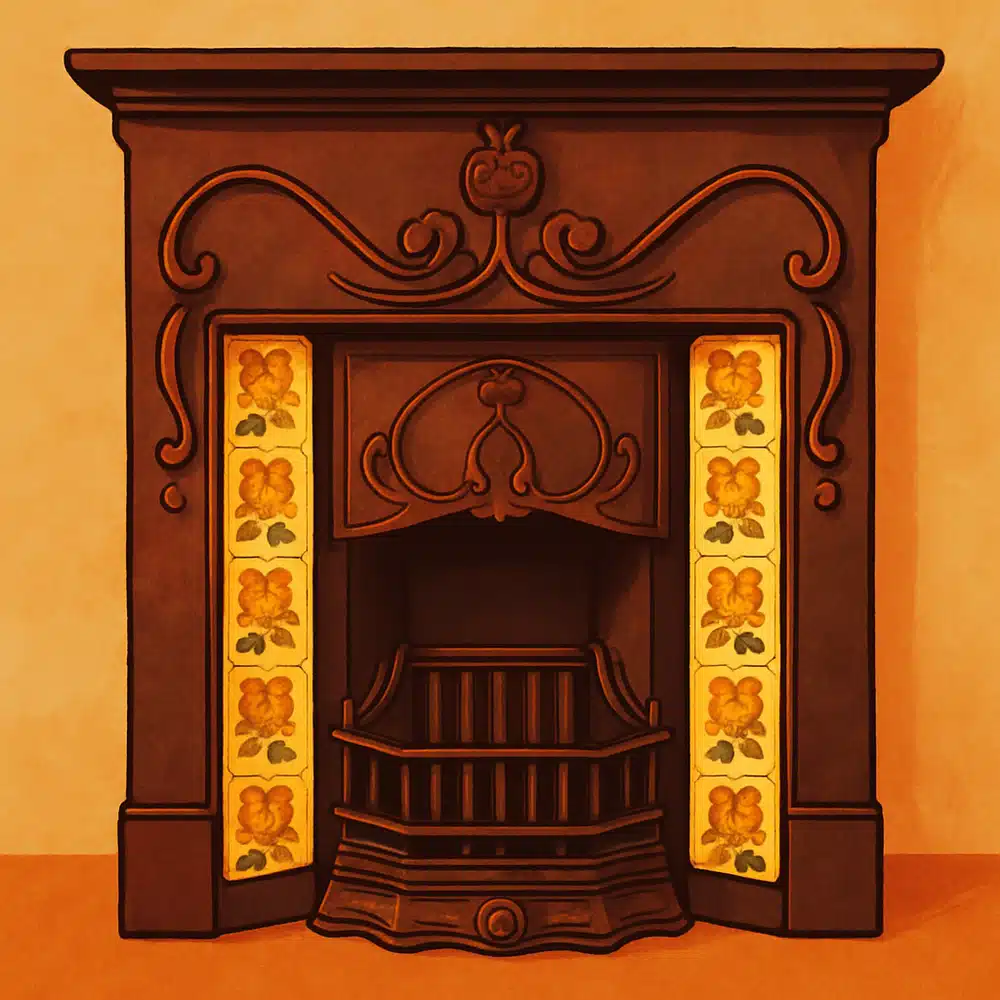
Fireplaces in schools and public buildings
Irish schoolhouses almost always had fireplaces throughout the 19th and early 20th centuries. Teachers benefited more than students from these hearths, which sat at the front of classrooms. Students had to carry sods of turf to school each winter morning as their parents helped maintain the school by providing fuel. This practice lasted years after 1911, when government funding started covering classroom heating costs.
The fireplace as a centerpiece in family life
The hearth stood as the “heart of the home” in Victorian society and symbolized domestic values and family unity. People coined the phrase “hearth and home” to express deep emotional connections. Families traditionally came together at fireplaces to share stories and news. The hearth appears as a symbol of shelter, comfort, and protection in literature from Tolkien’s “Lord of the Rings” to Wilder’s “Little House on the Prairie.” Modern home design still features the fireplace as a powerful focal point that connects our ancient heritage with today’s aesthetic preferences.
The Fireplace in the 21st Century Home
Modern fireplaces look nothing like the cast iron designs from the last century. Today’s options blend technology with beautiful designs that work in all homes.

Electric fireplace insert and tv stand with fireplace
Electric fireplaces have changed the way we heat our homes. You can put these units almost anywhere because they don’t need venting. The latest electric fireplace models create lifelike flames through holographic technology, with 3D effects that show up on high-definition logs. Many people now choose fireplace TV stands that work as entertainment centers and heaters. These versatile pieces give you plenty of storage and heat up to 1000 square feet while generating 4780 BTUs.
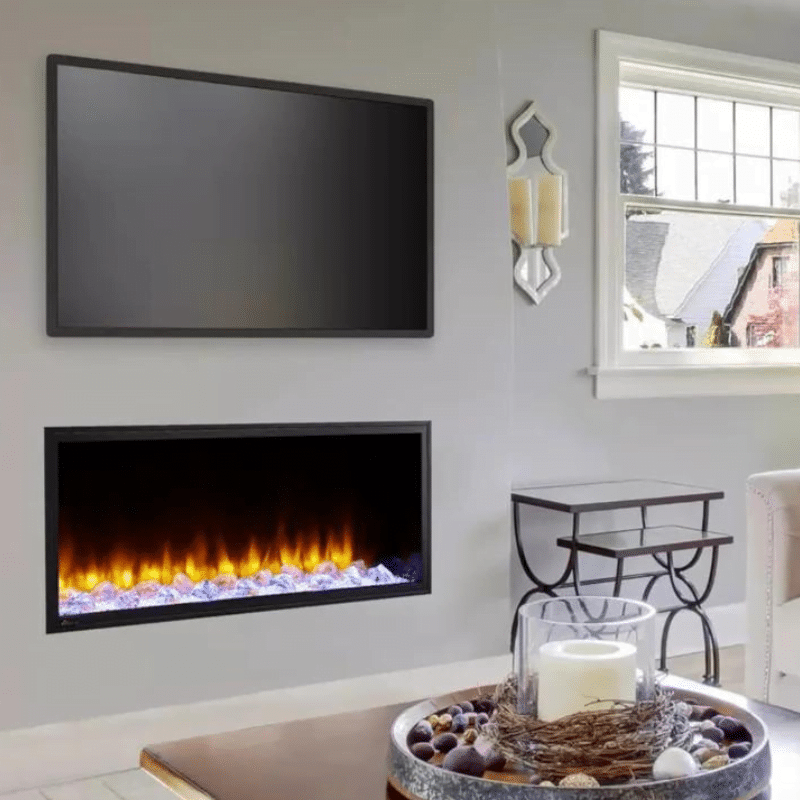
Gas fireplace vs. electric fireplace heater
Your heating needs and setup options will help you decide between gas and electric. Gas fireplaces put out much more heat (20,000-40,000 BTUs per hour) than electric ones (3,000-10,000 BTUs). In spite of that, electric fireplaces turn almost all power into heat, which makes them good for small spaces.
Fireplace surround and cover design trends
The 2025 fireplace designs focus on sleek lines and simple looks. People love linear fireplaces that fit under TVs or along walls as eye-catching features. Current styles use materials like marble, concrete, and metal to create a modern, sophisticated feel.
Ventless gas fireplace safety and efficiency
Ventless gas fireplaces let combustion byproducts into your living space, so safety matters a lot. New units come with oxygen depletion sensors (ODS) that turn off automatically if oxygen gets too low. Experts say you should run these units for no more than six hours each day and put carbon monoxide detectors nearby.
Eco-friendly and smart fireplace ideas
The newest eco-friendly fireplaces use water vapor technology to create real flames without harmful emissions. These systems clean the air with virucidal UVC LEDs and use very little power (less than 100W for a 100cm insert). Smart features let you control everything through apps, voice commands, or remotes, so you can change the flame style, colors, and height easily.
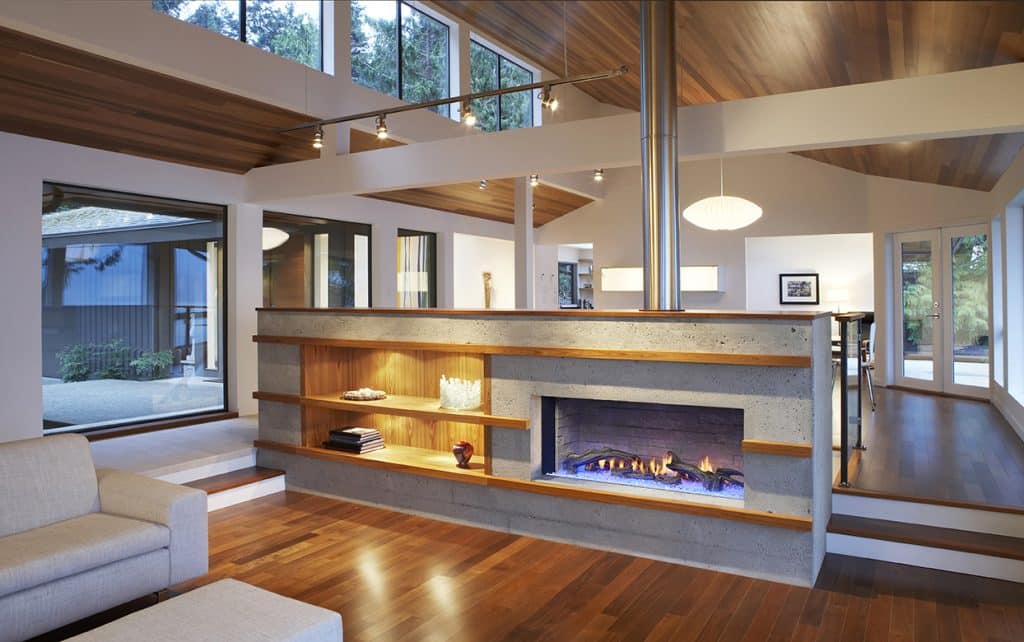
From Fire Pits to Flame Effects, Fireplaces Have A lot of History
The fireplace stands among household features with the most remarkable design progress in human history. People first dug fire pits into cave floors almost 800,000 years ago. Today’s smart, eco-friendly installations respond to voice commands, showing how far we’ve come in this amazing trip through time.
We could heat our homes in simpler ways, but fireplaces remain popular because they touch something deep within us. Even with centuries of technological progress, the sight of dancing flames still draws us in. The fireplace connects our ancient past to our technological future which is proof that some basic human needs stay the same, even as we find new ways to meet them.
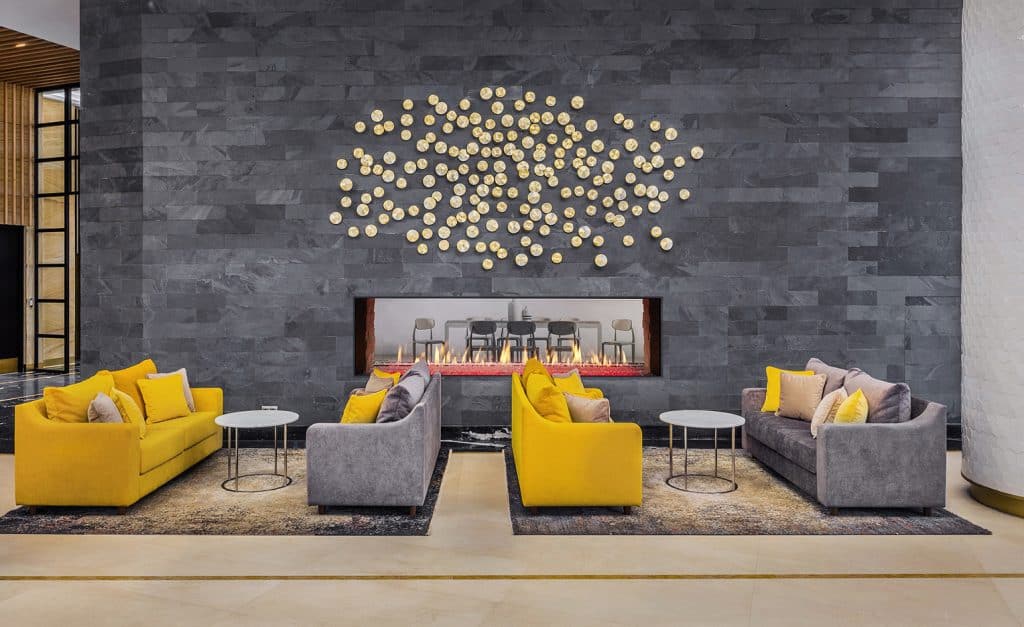
Questions About The History of Fireplaces
How long have humans used fire for heating and cooking?
Archaeological evidence shows humans began using fire for cooking around 1.5 million years ago, but the consistent use of fire for warmth and daily life didn’t begin until roughly 350,000 years ago. The earliest fireplace-like structures date back 800,000 years.
What did the earliest fireplaces look like?
Primitive fireplaces were simple holes dug into cave floors or shelters, with open flames and no real smoke control. These early fire pits served as heat and light sources, but indoor air quality was often poor.
When did chimneys become common in homes?
Chimneys began appearing in Norman England around the 11th century. By the 14th century, vertical chimneys became standard in European homes, allowing fireplaces to move from the center of rooms to exterior walls and improving air quality dramatically.
What impact did fire have on early human society?
Fire allowed people to live in previously uninhabitable spaces like dark caves and offered protection from predators. It also made previously inedible foods, like fibrous roots and tubers, digestible—leading to major shifts in diet and community structure.
Who were some important figures in fireplace innovation?
Notable inventors include Benjamin Franklin, who introduced the Franklin stove in 1742 for better heat distribution, and Count Rumford, whose 1796 fireplace design improved airflow and efficiency. Prince Rupert of the Rhine also made advances in fireplace grates.
How did fireplaces become symbols of culture and family life?
In ancient Greece, the hearth was so significant it played a role in marriage ceremonies. Later, Victorian and Edwardian fireplaces became decorative focal points, symbolizing family unity, wealth, and cultural values.
When did fire safety become a major concern in fireplace design?
Safety became a bigger focus in the 19th century with the invention of fireplace screens to prevent sparks from flying into rooms. Medieval cantou (inglenook) designs also improved safety by enclosing fires and reducing drafts.
How have fireplace aesthetics evolved over time?
Victorian fireplaces featured ornate cast iron and large mantels for decoration. Edwardian styles followed with cleaner lines and lighter colors. Modern designs now favor minimalist surrounds, linear styles, and materials like marble, concrete, and metal.
What are the differences between modern gas and electric fireplaces?
Gas fireplaces generate more heat (20,000–40,000 BTUs) and require ventilation, while electric fireplaces produce 3,000–10,000 BTUs and can be placed anywhere. Electric models also feature high-tech visuals, including holographic flames and app control.
What does the future hold for fireplaces?
Eco-friendly technologies like water vapor flames and smart controls are shaping the next era. These fireplaces produce no emissions, use little energy, and include features like UVC air cleaning and voice-activated customization—blending sustainability with convenience.
